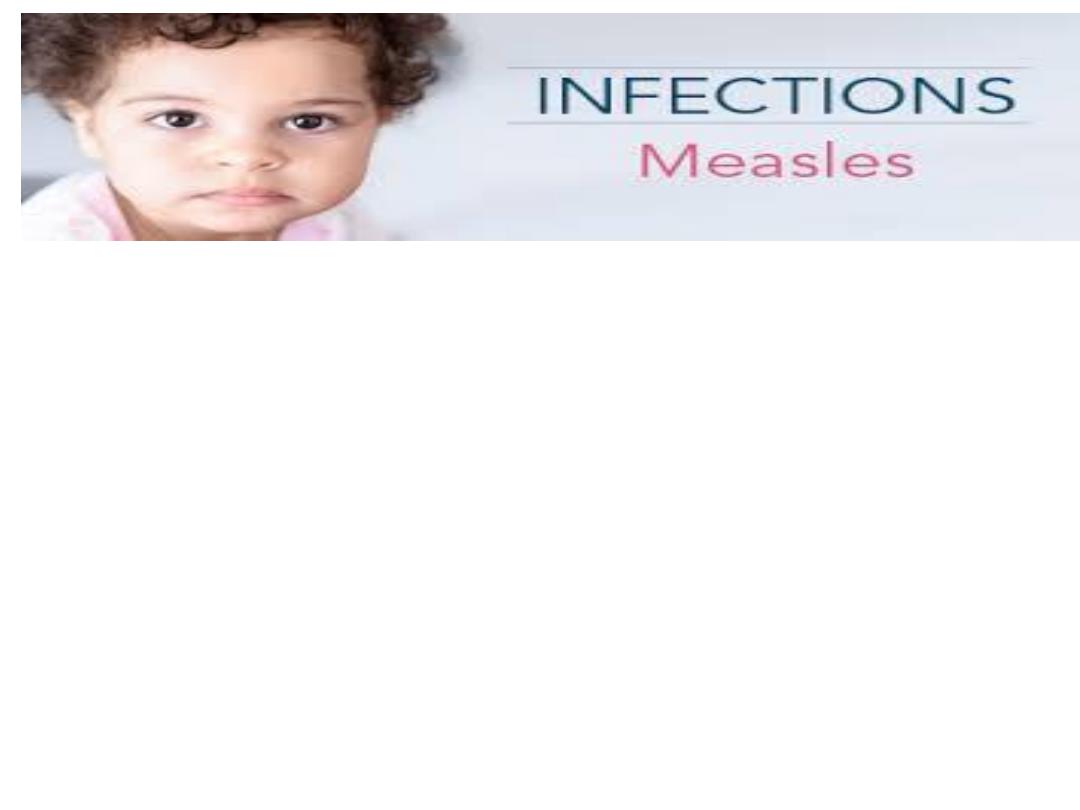
Measles
د
.
هديل فاضل
فرهود
محاضرة
4
مرحلة رابعة

•
Measles is a highly contagious, serious disease caused by a
virus. In 1980, before widespread vaccination, measles
caused an estimated 2.6 million deaths each year.
•
The disease remains one of the leading causes of death
among young children globally, despite the availability of a
safe and effective vaccine. Approximately 134 200 people
died from measles in 2015 – mostly children under the age
of 5.
•
Accelerated immunization activities have had a major
impact on reducing measles deaths. During 2000-2015,
measles vaccination prevented an estimated 20.3 million
deaths. Global measles deaths have decreased by 79% from
an estimated 651 600 in 2000* to 134 200 in 2015.
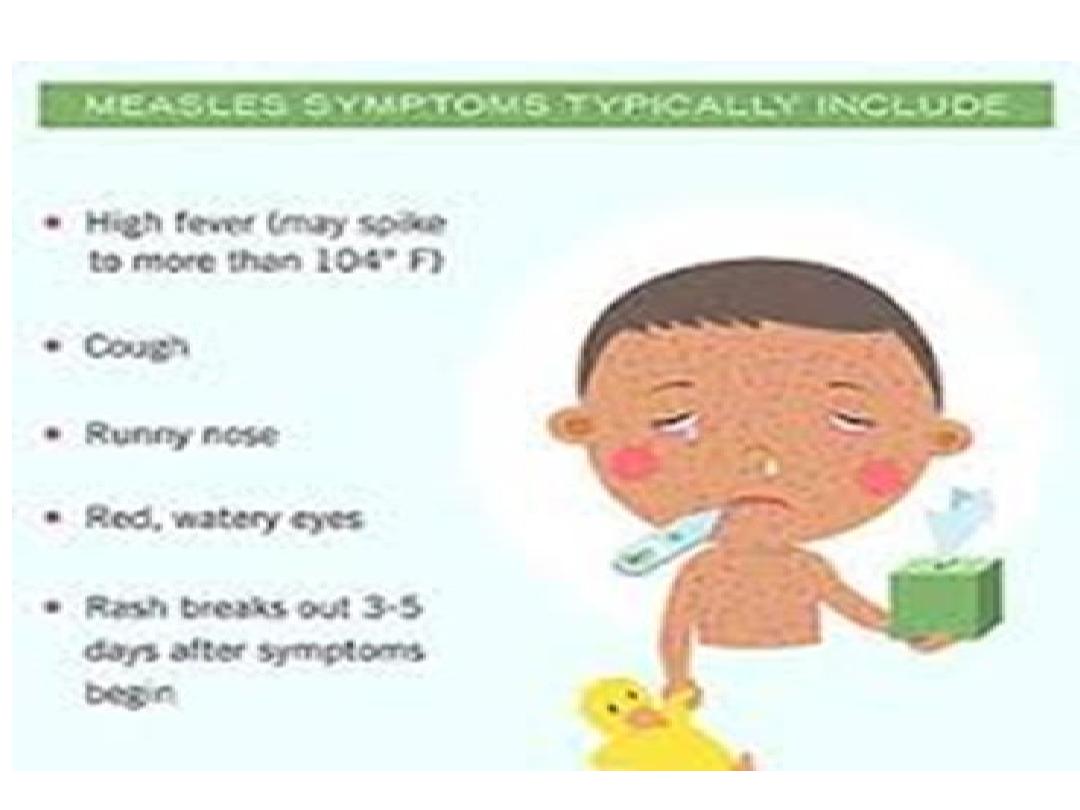

Signs and symptoms:
•
The first sign of measles is usually a high fever,
which begins about 10 to 12 days after exposure
to the virus, and lasts 4 to 7 days. A runny nose,
a cough, red and watery eyes, and small white
spots small spots with white or bluish white
centers on erythematous base on the buccal
mucosa (Koplike spots) inside the cheeks can
develop in the initial stage.

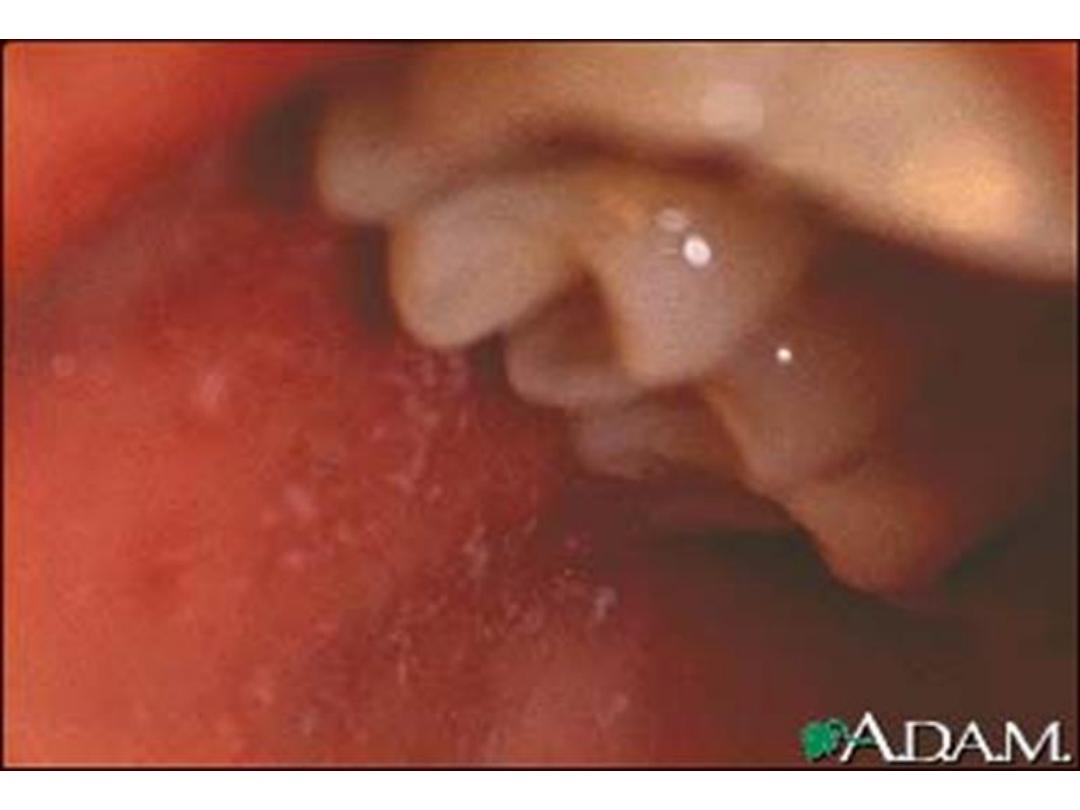
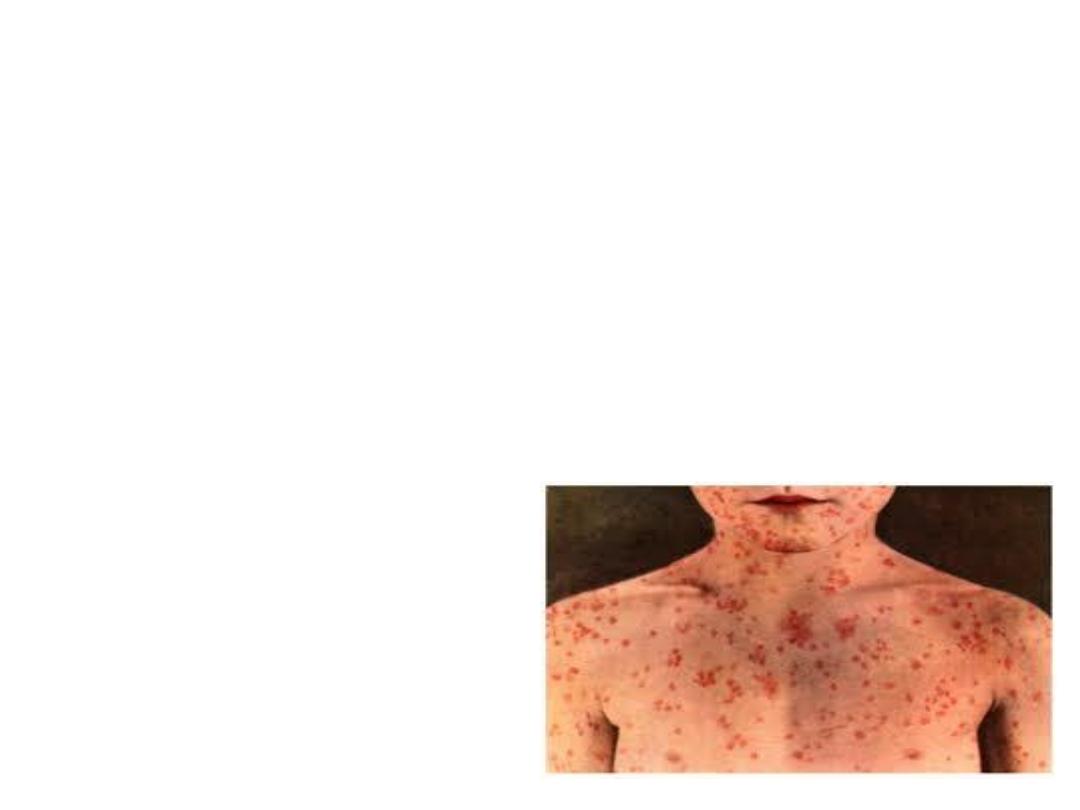
•
After several days, a rash erupts, usually on
the face and upper neck. Over about 3 days,
the rash spreads, eventually reaching the
hands and feet. The rash lasts for 5 to 6 days,
and then fades. On average, the rash occurs
14 days after exposure to the virus (within a
range of 7 to 18 days).
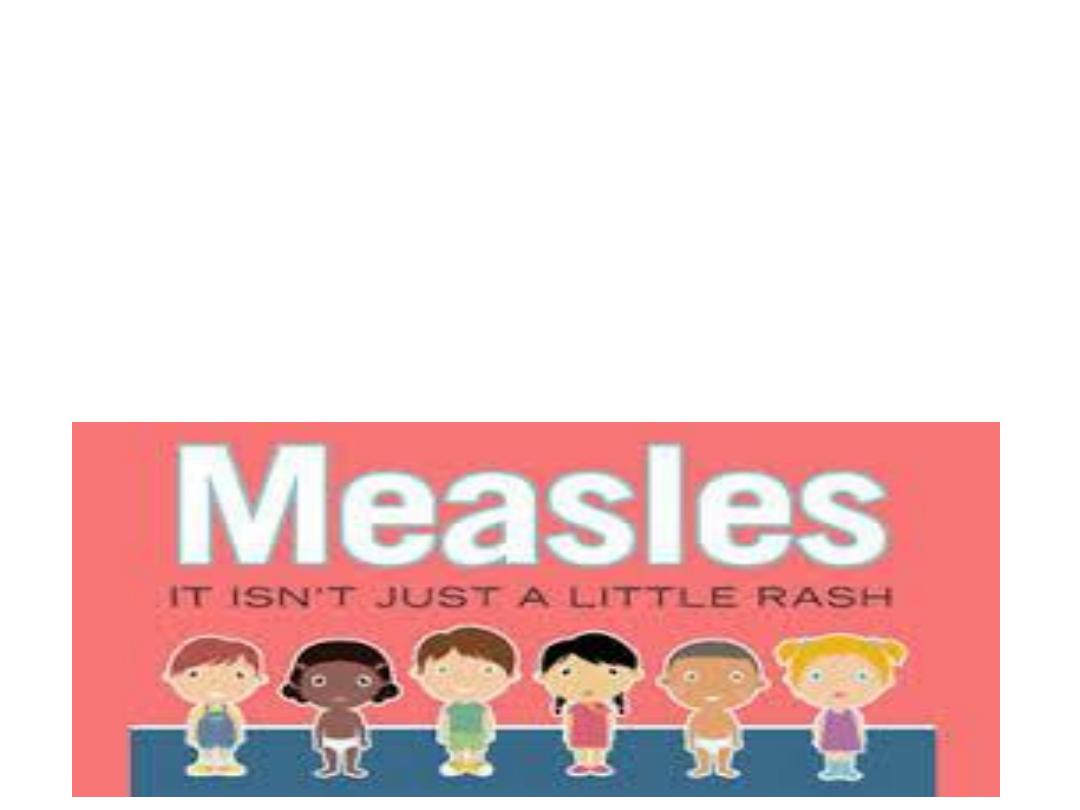
Complications
•
otitis media ,pneumonia ,diarrhea
,encephalitis,
•
larangeotracheobronchitis (croup).
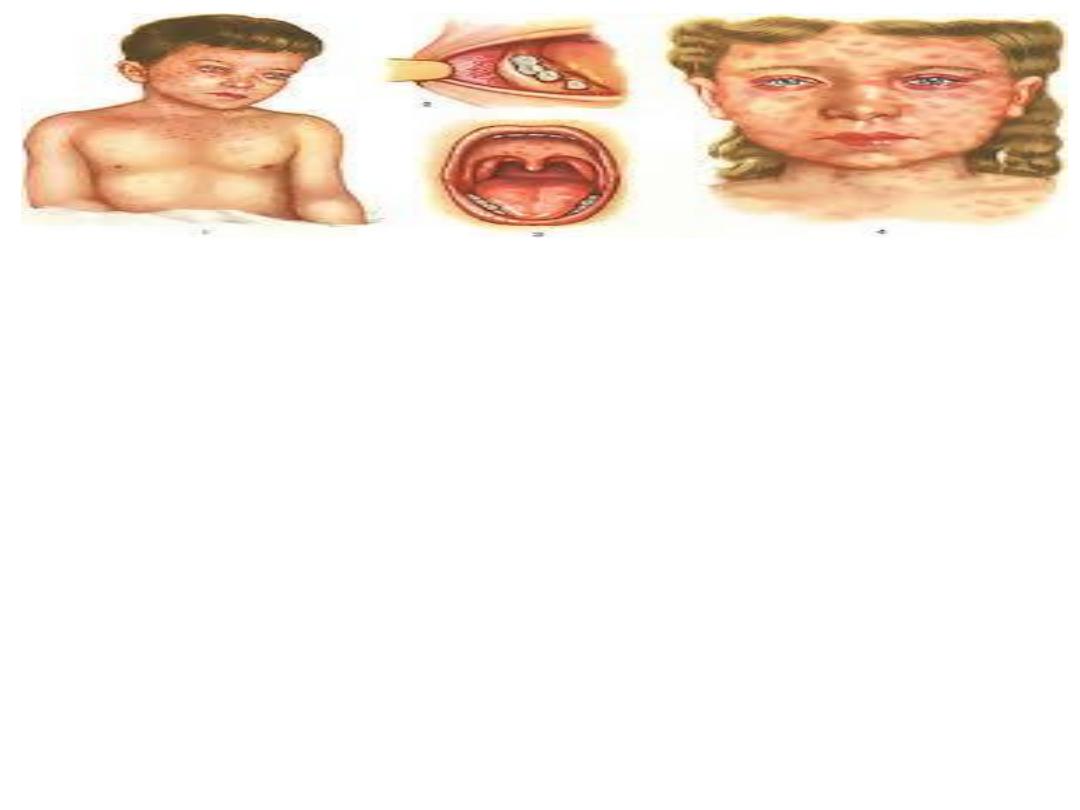
•
Severe measles is more likely among poorly nourished
young children, especially those with insufficient
vitamin A, or whose immune systems have been
weakened by HIV/AIDS or other diseases.In populations
with high levels of malnutrition and a lack of adequate
health care, up to 10% of measles cases result in death.
Women infected while pregnant are also at risk of
severe complications and the pregnancy may end in
miscarriage or preterm delivery. People who recover
from measles are immune for the rest of their life.

Who is at risk?
•
1-Unvaccinated young children are at highest risk of
measles and its complications, including death.
•
2- Unvaccinated pregnant women are also at risk.
•
3- Any non-immune person (who has not been
vaccinated or was vaccinated but did not develop
immunity) can become infected.
•
4- Damage to health infrastructure and health services
interrupts routine immunization, and overcrowding in
residential camps greatly increases the risk of infection.
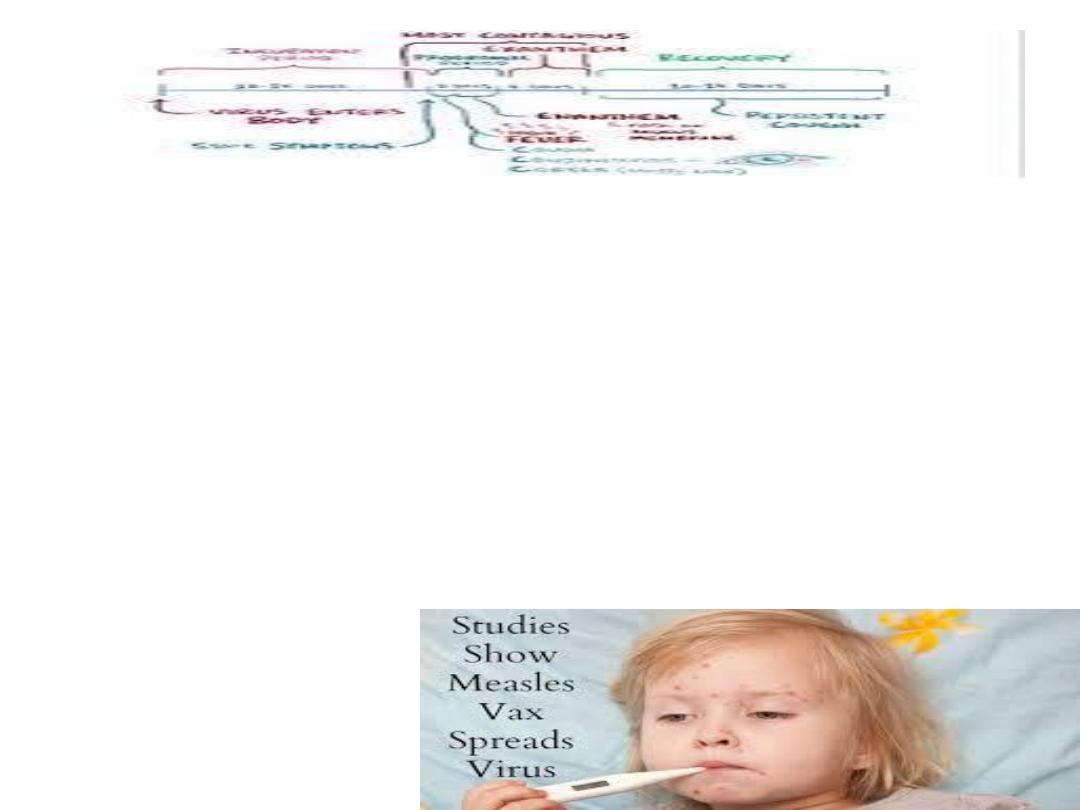
•
Mode of transmission: Measles is one of the
most highly communicable diseases
•
1-Air borne by droplet spread
•
2-Direct contact with nasal or throat
secretions of infected person& By articles
freshly soiled with nose throat secretion (less
common)
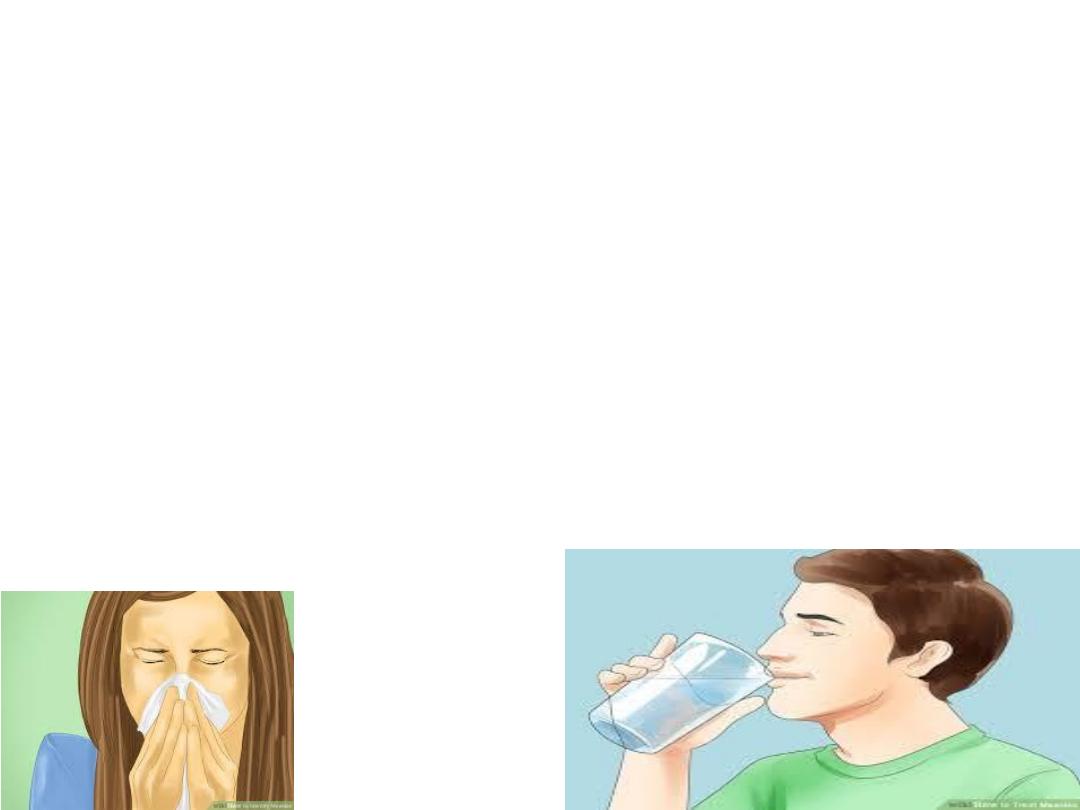
•
incubation period: about 10 days, but may be
7-18 days from the exposure to onset of fever,
usually 14 days until rash appears
•
period of communicability
•
Usually about 4 days before rash onset to 4
days after the rash
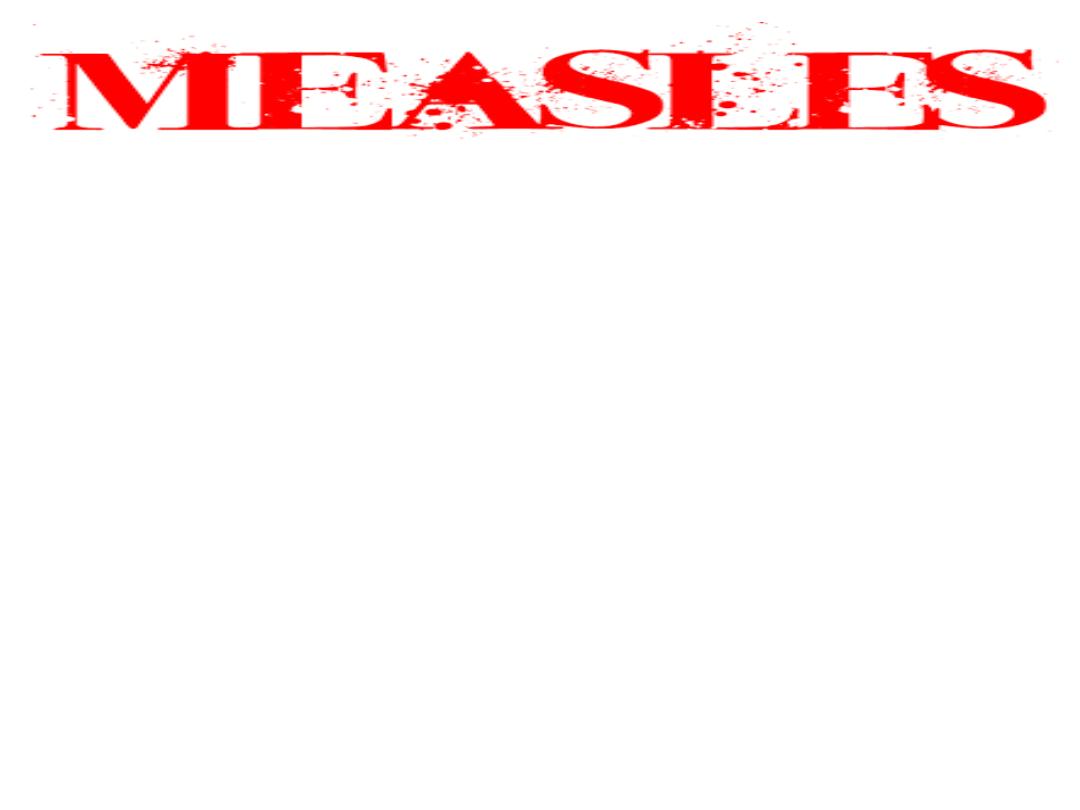
•
susceptibility & resistance :all persons who not
had the disease
•
and all persons not successfully-immunized
Acquired immunity after illness is permanent
•
Infants born to mothers who had the disease are
protected for 1st 6-9 months or more
Immunizations at 12-15 months induces
immunity in 94-98%.
•
Treatment:
•
No specific antiviral treatment exists for measles
virus

•
All children in developing countries diagnosed
with measles should receive two doses of
vitamin A supplements, given 24 hours apart.
This treatment restores low vitamin A levels
during measles that occur even in well-
nourished children and can help prevent eye
damage and blindness. Vitamin A
supplements have been shown to reduce the
number of deaths from measles by 50%.
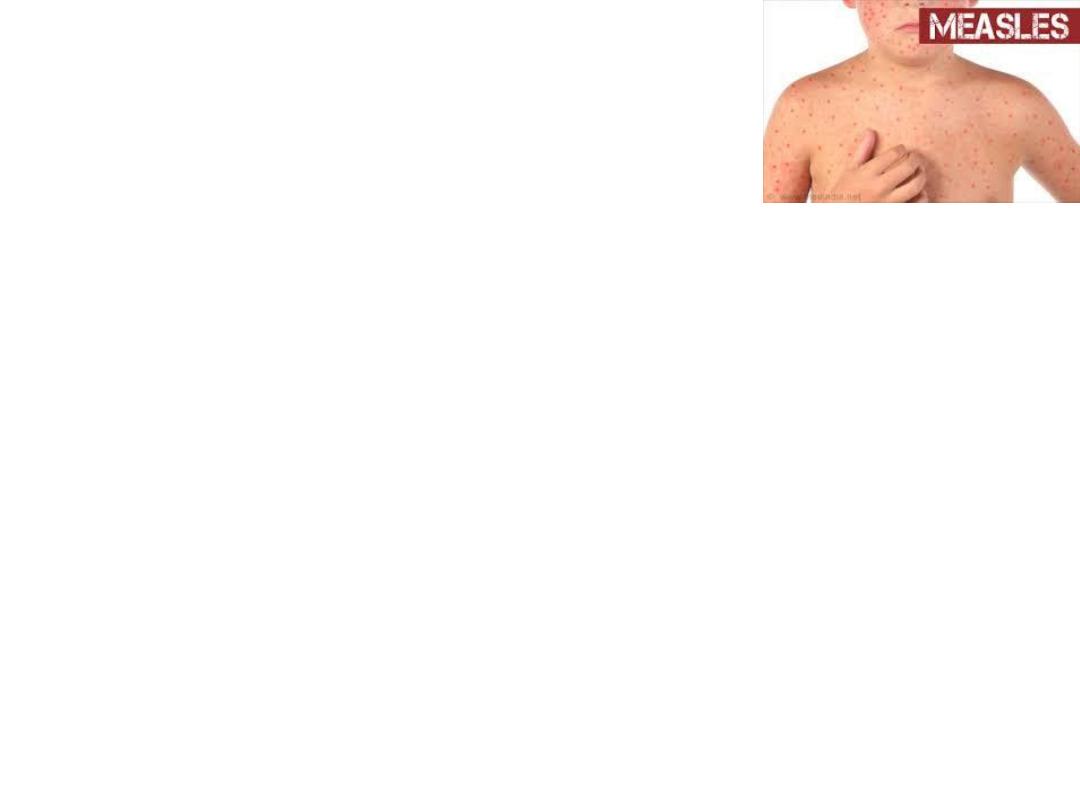
Methods of control:
•
Routine measles vaccination for children,
combined with mass immunization campaigns
in countries with high case and death rates,
are key public health strategies to reduce
global measles deaths. Two doses of the
vaccine are recommended to ensure immunity
and prevent outbreaks, as about 15% of
vaccinated children fail to develop immunity
from the first dose
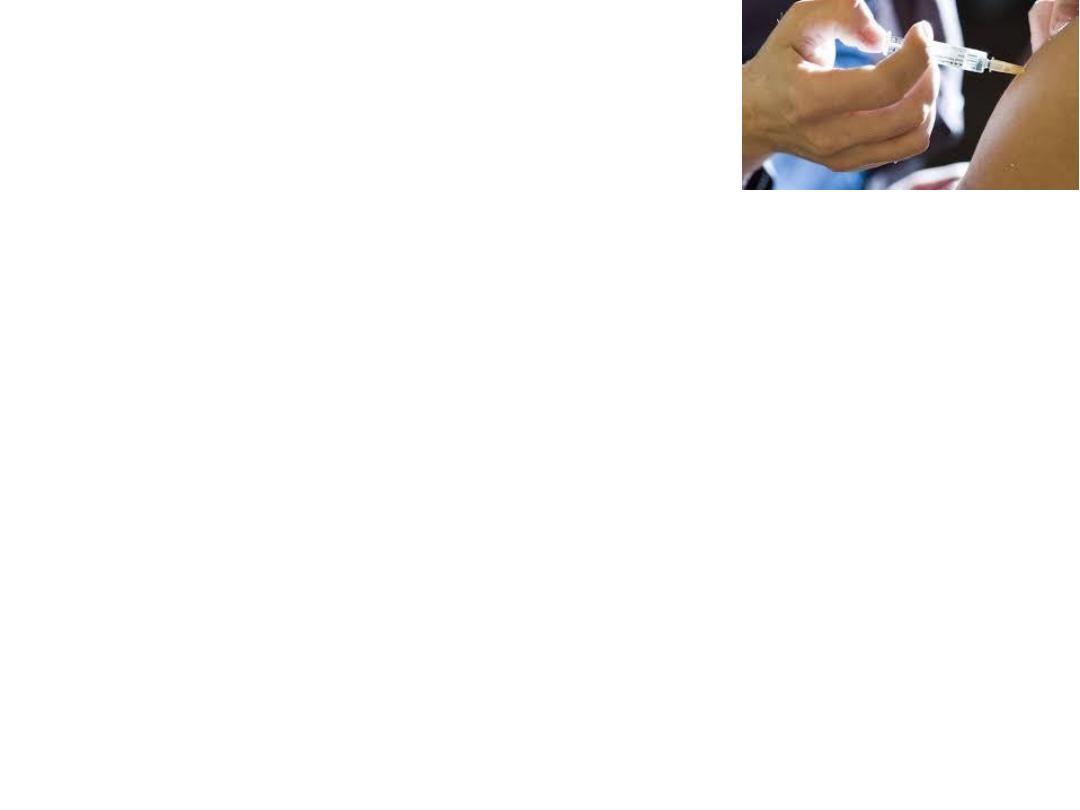
A- preventive measures
•
1-public education by health department to
encourage measles immunization for all
susceptible infant, children , adolescent & young
adult.
•
Those for whom vaccine is contraindicated & un
immunized persons identified more than 72 hr
after exposure to measles may be partially or
completely protected by IG given within 6 days
after exposure
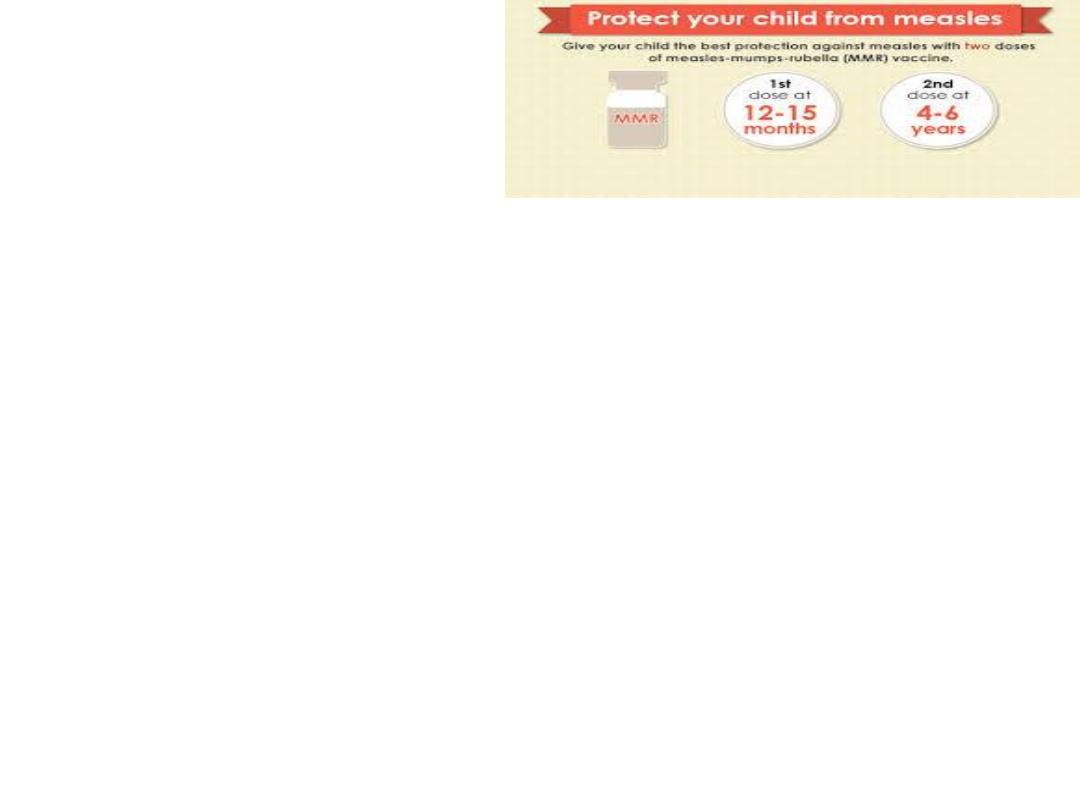
2-immunization
•
Live attenuated measles vaccine. in combined
with other live vaccine ( mumps , rubella )
should induced active immunity in 94%-98%
of susceptible individual, possibly for life , by
producing mild or in apparent , no
communicable infection
•
A second dose of measles vaccine may
increase immunity level to 99%
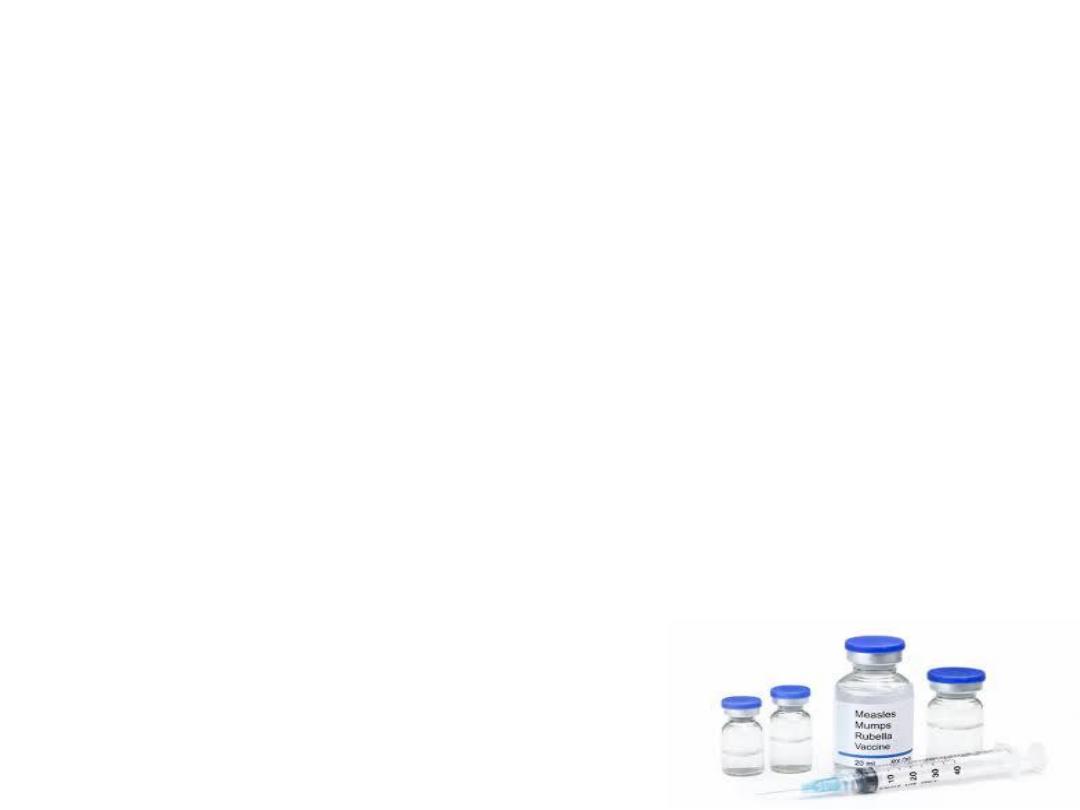
Contraindications to live virus vaccines
•
immunodeficiency diseases, severe acute
illness with or without fever ,anaphylactic
hypersensitivity to previous dose of measles
vaccine ,pregnancy
•
- vaccine should be given at least 14 days
before immunoglobulin or blood transfusion
IG or blood product can interfere with
response to measles vaccine.
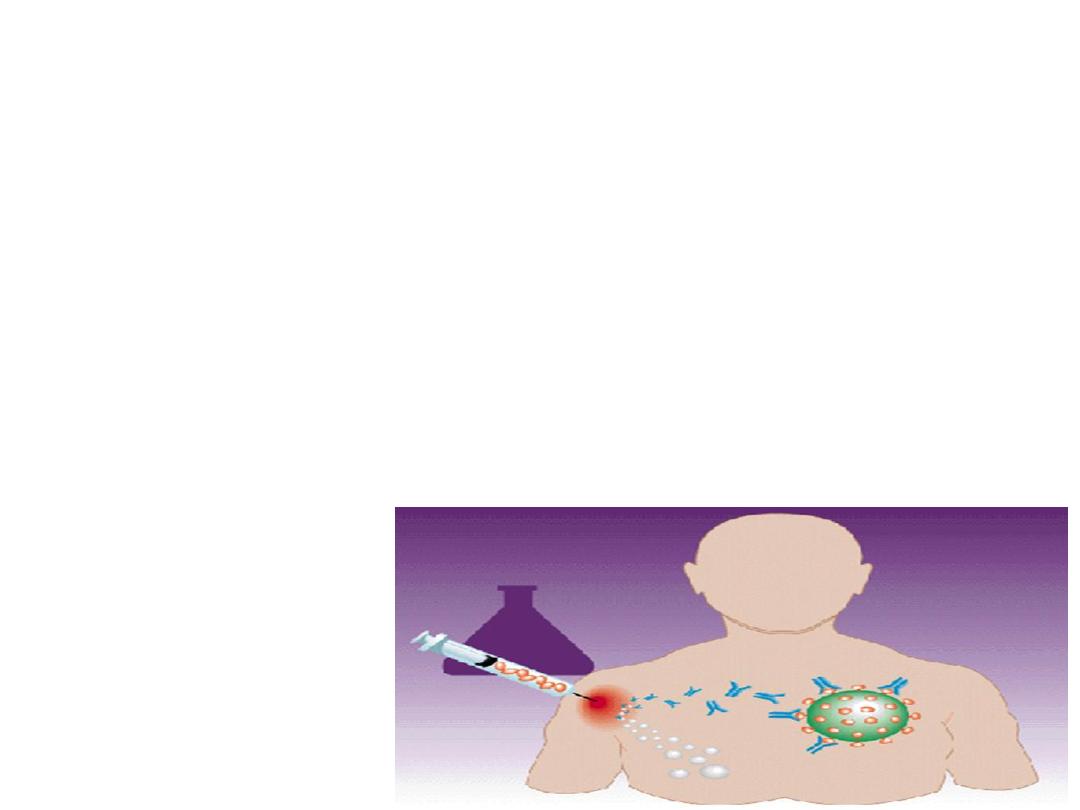
Complications of measles
immunization:
•
-5-15%may develop malaise & fever to 39.4 cent within
5-12 days post immunization & last 1-2 days
•
-rash coryza mild cough & kop like spots may
occur,febrile seizure occur infrequently
•
- -encephalitis & encephalopathy (less than one case
per million doses)

B- control of patient , contact &
immediate environment
•
1-obligatory case report to local health
authority
•
2-isolation: children with measles should be
kept out of school for 4 days after rash. In
hospital , respiratory isolation
•
3-concurrent disinfection: none
•
4-quarantine : of institutions , wards can
sometimes be of value. Strict segregation of
infants if measles occur in institution
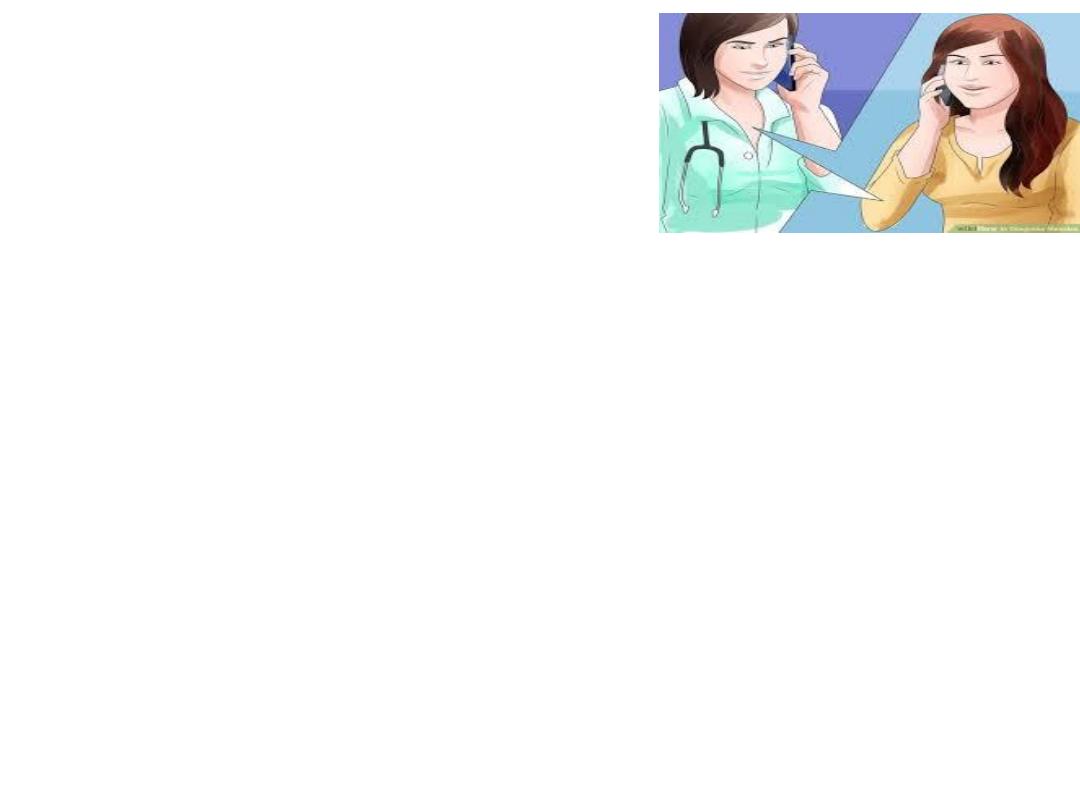
•
5-immunization of contacts :-
•
live virus vaccine is given within 72 hours of
exposure
•
IG may be use within 6 days of exposure for
susceptible household or other contact (
particularly contact under 1 year of age, pregnant
or immunocompromised persons or for whom
measles vaccine is contraindicated
•
Live measles vaccine should be given 5-6 months
later to those the vaccine is not contraindicated

C- epidemic measures:
•
1-prompt reporting within 24 hr of suspected
cases & comprehensive immunization
programs for all susceptible are needed to
limit spread
•
In day care, school & college outbreaks, all
persons take 2 doses of live virus vaccine at
least 1 month apart should be immunized
unless they have diagnose measles or
laboratory evidence of immunity

•
2-in institutional outbreaks, new admission
should receive vaccine or immunoglobulin
•
3-in many less developed countries, measles
has a relatively high case fatality rate. If
vaccine is available, prompt use at the
beginning of an epidemic is essential to limit
spread, if vaccine supply is limited, priority
should be given to young children for whom
the risk is greatest

WHO response:
•
1-increase routine coverage with the first dose
of measles-containing vaccine (MCV1) by
more than 90% nationally and more than 80%
in every district or equivalent administrative
unit for children aged 1 year
•
2-reduce and maintain annual measles
incidence to less than 5 cases per million; and
•
3-reduce estimated measles mortality by
more than 95% from the 2000 estimate.

•
All WHO Regions have now established goals
to eliminate this preventable killer disease by
2020.

•
Thank you
